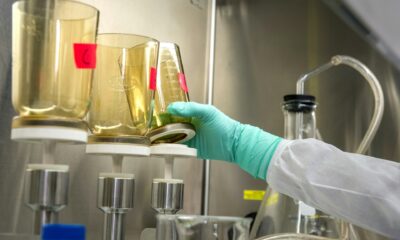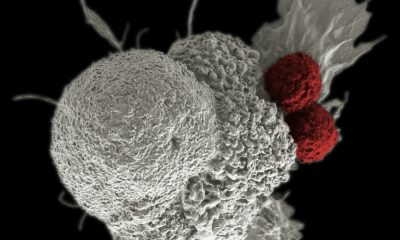Biotech
Castile and León Unveils Bold Strategy for Advanced Therapies
Castile and León’s Health Ministry launched its 2025–2030 Strategy for Advanced Therapies to boost innovation in biotech and regenerative medicine. Key goals include doubling clinical trials, creating the CreTACYL network center, and uniting universities and research institutes. The plan aims to position the region as a leader in cutting-edge treatments and strengthen public healthcare.

The Ministry of Health of Castile and León has unveiled its Research and Innovation Strategy for Advanced Therapies 2025-2030, an initiative that, they explain, “marks a milestone in the development of the medicine of the future” and has four general objectives. The strategy foresees a significant boost to innovation in advanced therapies in the healthcare system, a challenge for which it will collaborate with public universities and the network of Biomedical Research Institutes of Castilla y León.
One of the key pillars of this plan is the creation of the Advanced Therapies Network Center of Castile and León (CreTACYL), which will lead the coordination of scientific, clinical, and technological efforts throughout the region. It will also develop priority lines of research and innovation in advanced therapies. Its objective is to position the region as a national and international benchmark, strengthen management, and promote innovation throughout the entire value chain.
In this way, the goal is to create an enabling environment for the co-creation of innovative solutions among healthcare professionals, researchers, patients , and businesses, by attracting investment, fostering scientific talent, and contributing to a more responsive and humane public healthcare system.
The Research and Innovation Strategy for Advanced Therapies 2025-2030 is part of the Castile and León Research and Innovation Strategy for Smart Specialization (RIS3) 2021-2027 and the Castilla y León Strategic Plan for Research and Innovation in Health 2023-2027. It is also structured around four main pillars: networked center; key areas; management and resources; and finally, value chain. These pillars are defined in 12 specific objectives and 52 activities.
This plan responds to a transformative reality: biotechnology, genetic engineering , nanotechnology, and immunotherapy are revolutionizing the way we prevent, diagnose, and treat complex diseases. What not long ago seemed like science fiction—such as correcting genetic mutations or reprogramming the immune system to eliminate tumors—is now a real clinical possibility.
The project is also supported by a strategic alliance between the Ministry of Health—through the centers and services of the Regional Health Management Office—the public universities of Castile and León (Burgos, León, Salamanca, and Valladolid), and the network of Biomedical Research Institutes. This collaboration will consolidate a robust, competitive biomedical ecosystem with a direct impact on citizens’ health.
Castile and Leon plans to double the number of tests
The 2025-2030 Advanced Therapies Research and Innovation Strategy aims to double the number of clinical trials conducted during its implementation period. Between 2019 and 2024, 47 studies were conducted, while the goal is to exceed 100 trials in the coming years. This growth will be supported by the active involvement of the Biomedical Research Institutes of Salamanca, Valladolid, León, and Burgos, bringing these innovative therapies to more patients and advancing equitable access to cutting-edge treatments.
With more than 15 years of experience in this field through the Network Center for Regenerative Medicine and Cell Therapy, Castile and León is taking a decisive step with this new strategy. In this way, the region reaffirms its commitment to scientific excellence, equity in access to treatments, and the continuous improvement of public healthcare.
__
(Featured image by Manuel Lopez via Unsplash)
DISCLAIMER: This article was written by a third party contributor and does not reflect the opinion of Born2Invest, its management, staff or its associates. Please review our disclaimer for more information.
This article may include forward-looking statements. These forward-looking statements generally are identified by the words “believe,” “project,” “estimate,” “become,” “plan,” “will,” and similar expressions. These forward-looking statements involve known and unknown risks as well as uncertainties, including those discussed in the following cautionary statements and elsewhere in this article and on this site. Although the Company may believe that its expectations are based on reasonable assumptions, the actual results that the Company may achieve may differ materially from any forward-looking statements, which reflect the opinions of the management of the Company only as of the date hereof. Additionally, please make sure to read these important disclosures.
First published in diariofarma. A third-party contributor translated and adapted the article from the original. In case of discrepancy, the original will prevail.
Although we made reasonable efforts to provide accurate translations, some parts may be incorrect. Born2Invest assumes no responsibility for errors, omissions or ambiguities in the translations provided on this website. Any person or entity relying on translated content does so at their own risk. Born2Invest is not responsible for losses caused by such reliance on the accuracy or reliability of translated information. If you wish to report an error or inaccuracy in the translation, we encourage you to contact us

-

 Crypto1 week ago
Crypto1 week agoTether Targets $500 Billion Valuation in Landmark Funding Push
-

 Markets5 days ago
Markets5 days agoDow Jones Strength Faces Risk From a Potential Yen Carry Trade Unwind
-

 Business2 weeks ago
Business2 weeks agoPrecious Metals’ Bull Market Continues
-

 Impact Investing16 hours ago
Impact Investing16 hours agoChristmas Plastic Waste and the Path to Circular, Low-Emission Solutions
























